Light - Reflection and Refraction
1/31
There's no tags or description
Looks like no tags are added yet.
Name | Mastery | Learn | Test | Matching | Spaced |
|---|
No study sessions yet.
32 Terms
Light
It is a form of energy that enables us to see objects. It travels in a straight line. It can travel through solids, liquids, and gas as well as through vacuum also, so it is known as electromagnetic wave.
Speed of light
Vaccum > Gases > Liquid > Solid
The speed of light in vaccum is 3×10⁸ m/s.
Reflection of light
The bouncing back of light in the same medium after hitting the surface of an object.
Laws of reflection
1. The angle of incidence is equal to the angle of reflection.
2. The incidence ray, the reflected ray, and the normal to the mirror at the point of incidence all lie in the same plane.
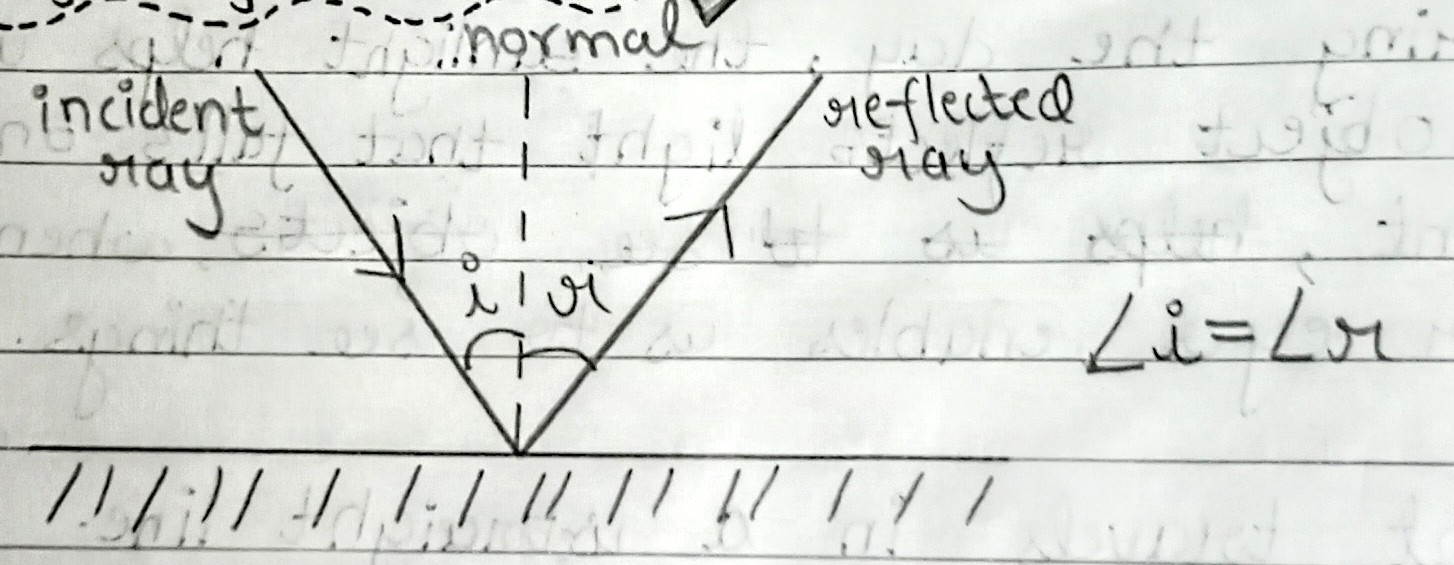
Types of reflections
Regular reflection (on smooth surfaces)
Irregular or diffused reflection (on rough surfaces)

Characteristics of an image formed by a plane mirror
1. Same size
2. Laterally inverted
3. Virtual and erect
4. Distance between object and mirror = the distance between the mirror and the image
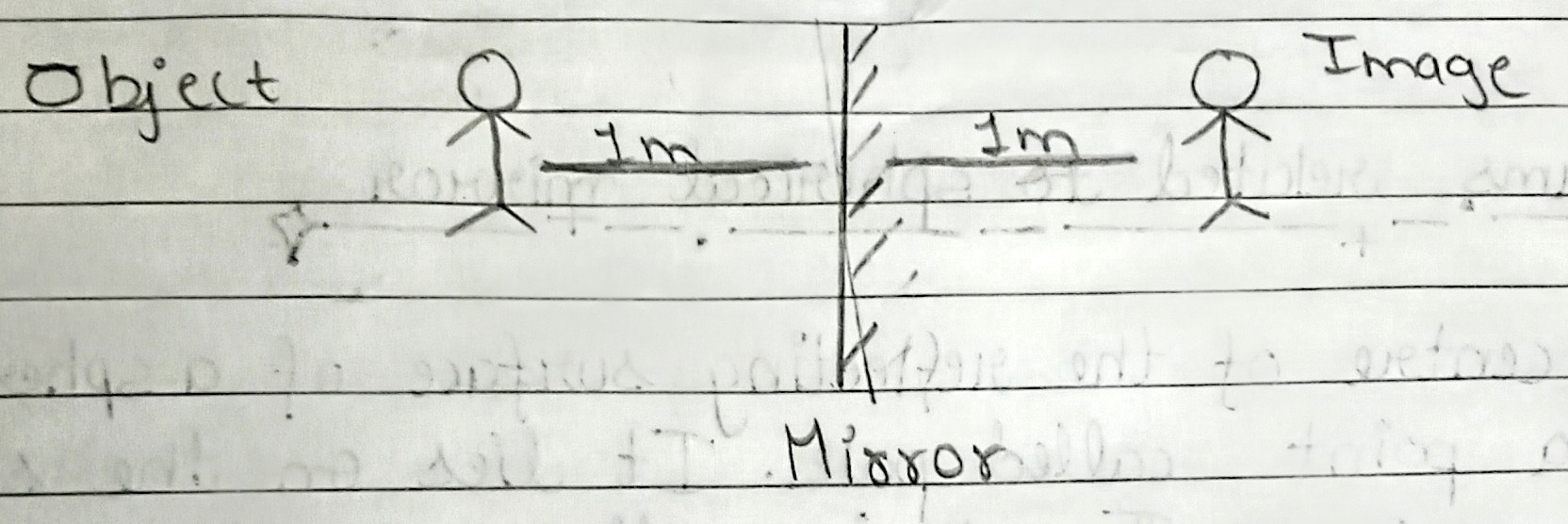
Concave mirror
A spherical mirror whose reflecting surface is curved inwards, that is, faces towards the center of the sphere.

Convex mirror
A spherical mirror whose reflecting surface is curved outwards.
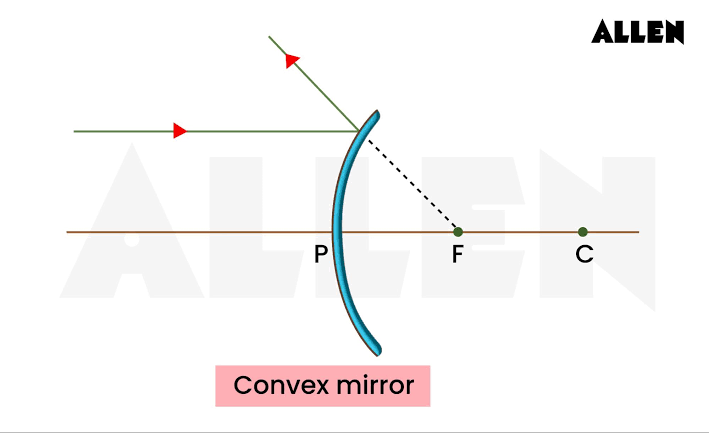
Pole
The center of the reflecting surface of a spherical mirror is a point called the pole. It lies on the surface of the mirror. The pole is usually represented by the letter P.
Centre of curvature
The reflecting surface of a spherical mirror forms a part of a sphere. This sphere has a center. This point is called the center of curvature of the spherical mirror. It is represented by the letter C.
Radius of curvature
The radius of the sphere of which the reflecting surface of a spherical mirror forms a part is called the radius of curvature of the mirror. It is represented by the letter R.
Principal axis
A straight line passing through the pole and the centre of curvature of a spherical mirror is called the principal axis.
Aperture
The reflecting surface of a spherical mirror is, by and large, spherical. The surface then has a circular outline. The diameter of the reflecting surface of spherical mirror is called its aperture.
Principal focus of concave mirror
The principal focus of a concave mirror is a point on the principal axis where all the reflected rays, which were parallel to each other, meet after hitting the mirror.
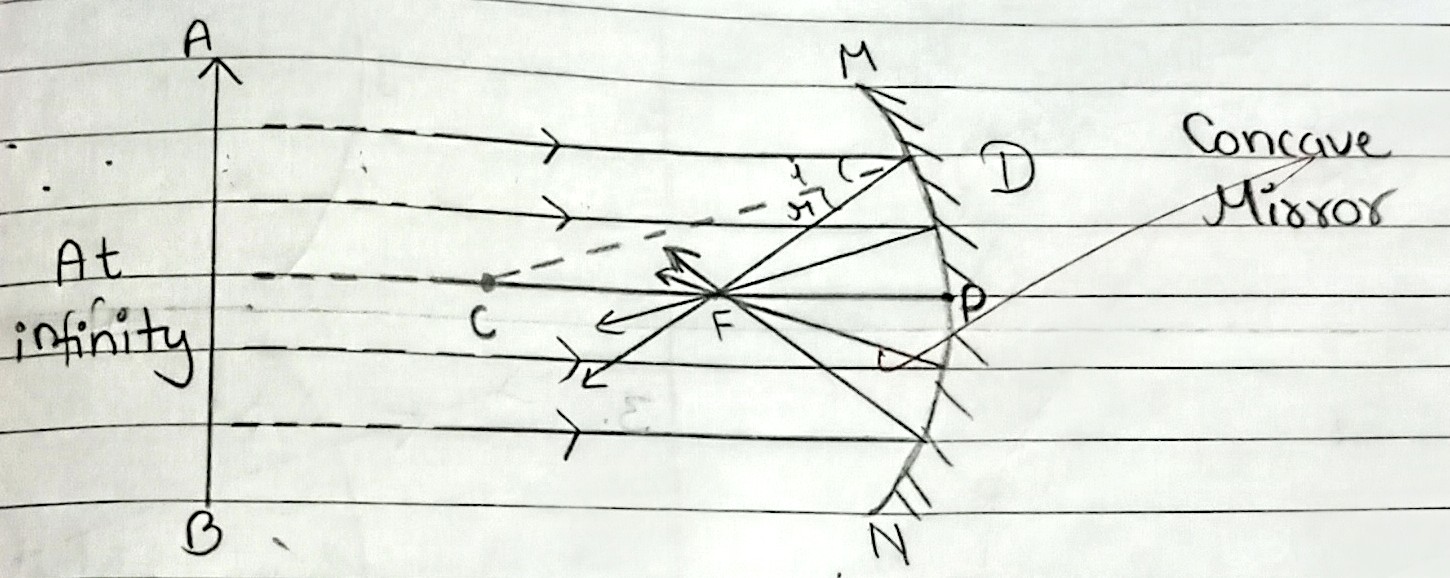
The principal focus of the convex mirror
The principal focus of a convex mirror is a point on the principal axis where all the reflected rays, which were parallel to each other, appear to meet after hitting the mirror.
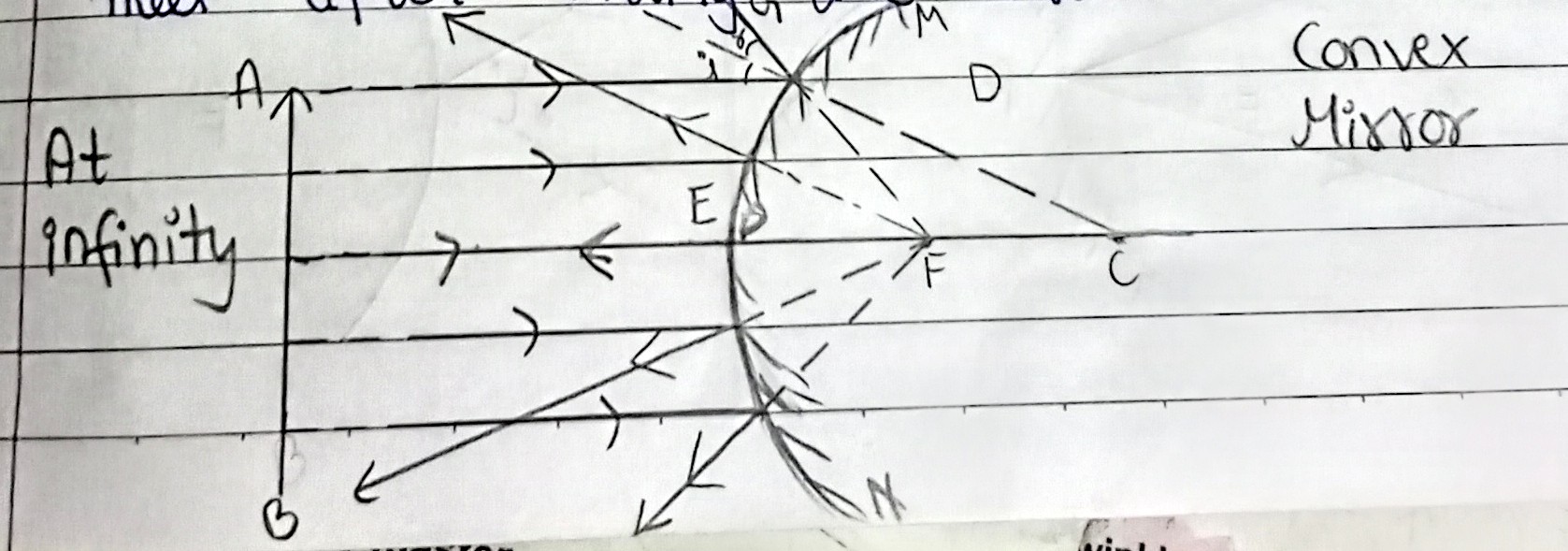
Rule 1 for image formation for spherical mirrors
A ray parallel to the principal axis, after reflection, will pass through the principal focus in the case of a concave mirror or appear to diverge from the principal focus in the case of a convex mirror.
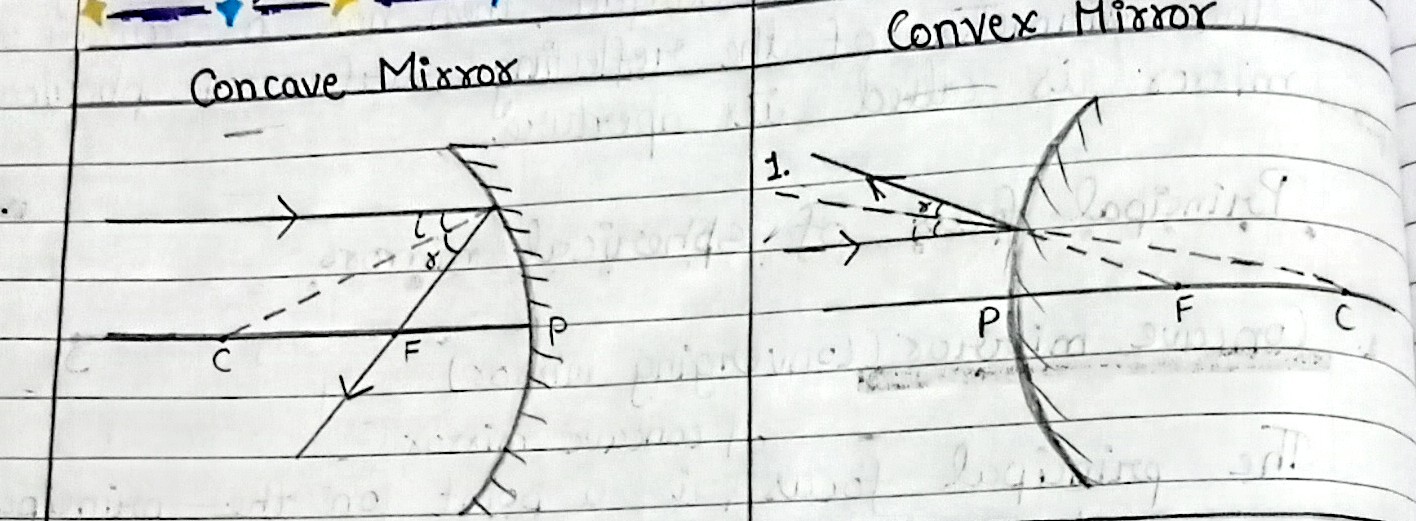
Rule 2 for image formation for spherical mirrors
A ray passing through the principal focus of a concave mirror or a ray which is directed towards the principal focus of a convex mirror, after reflection, will emerge parallel to the l.principal axis.

Rule 3 for image formation for spherical mirrors
A ray passing through the centre of curvature of a concave mirror or directed in the direction of the centre of curvature of a convex mirror, after reflection, is reflected back along the same path. The light rays come back along the same path because the incident rays fall on the mirror along the normal to the reflecting surface.

Rule 4 for image formation for spherical mirrors
A ray incident obliquely to the principal axis, towards a point P (pole of the mirror), on the concave mirror or a convex mirror, is reflected obliquely. The incident and reflected rays follow the laws of reflection at the point of incidence (point P), making equal angles with the principal axis.
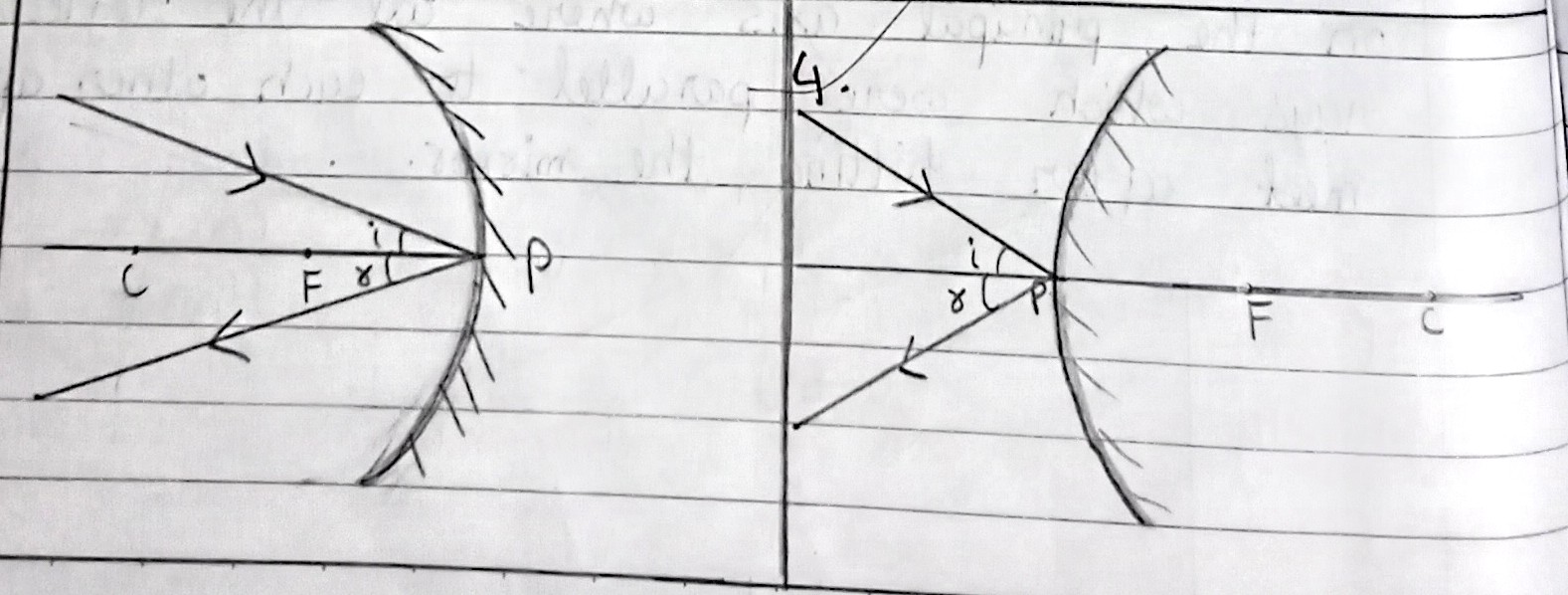
Image formation by a concave mirror
Object is at infinity
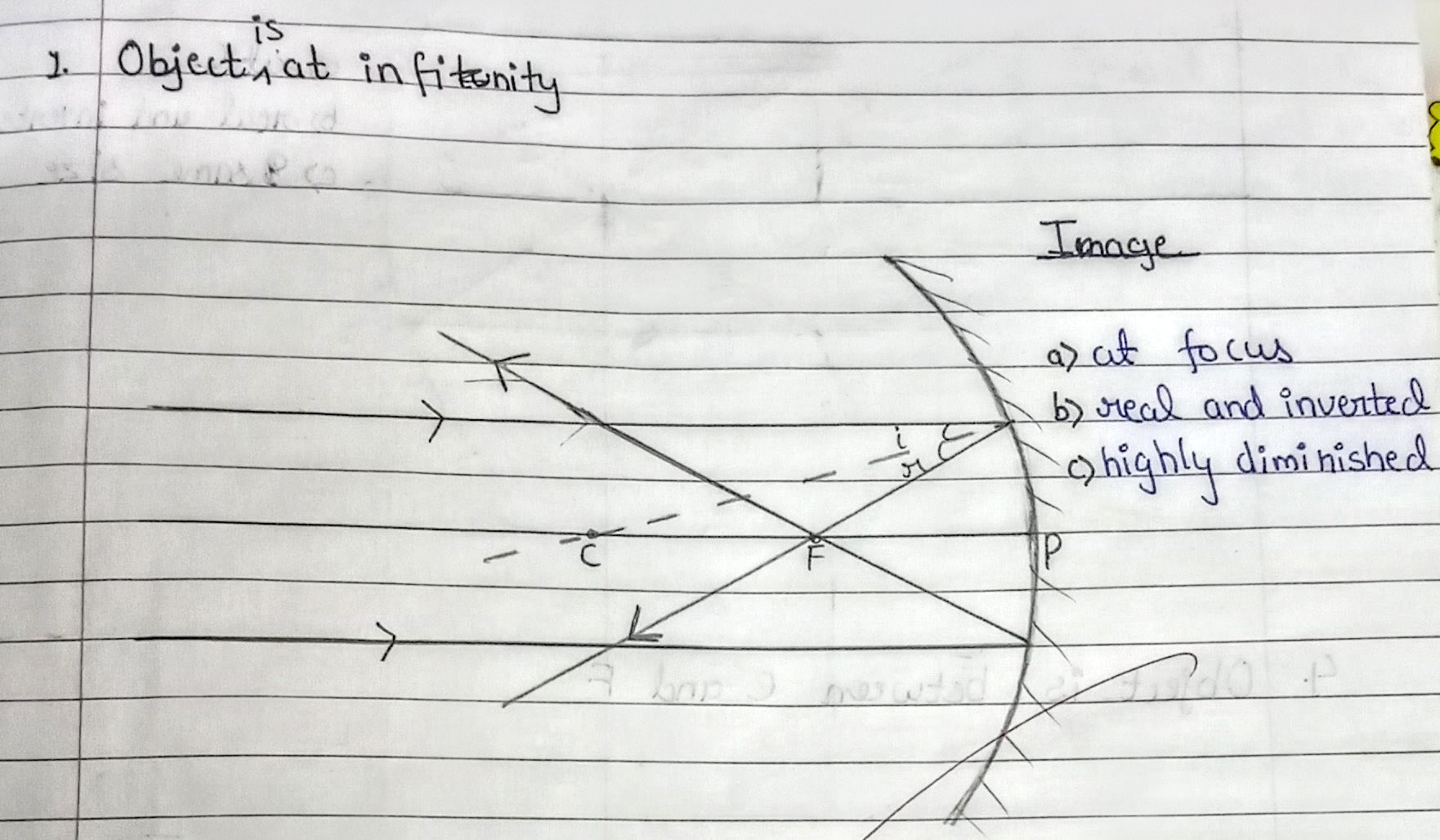
Object is beyond C
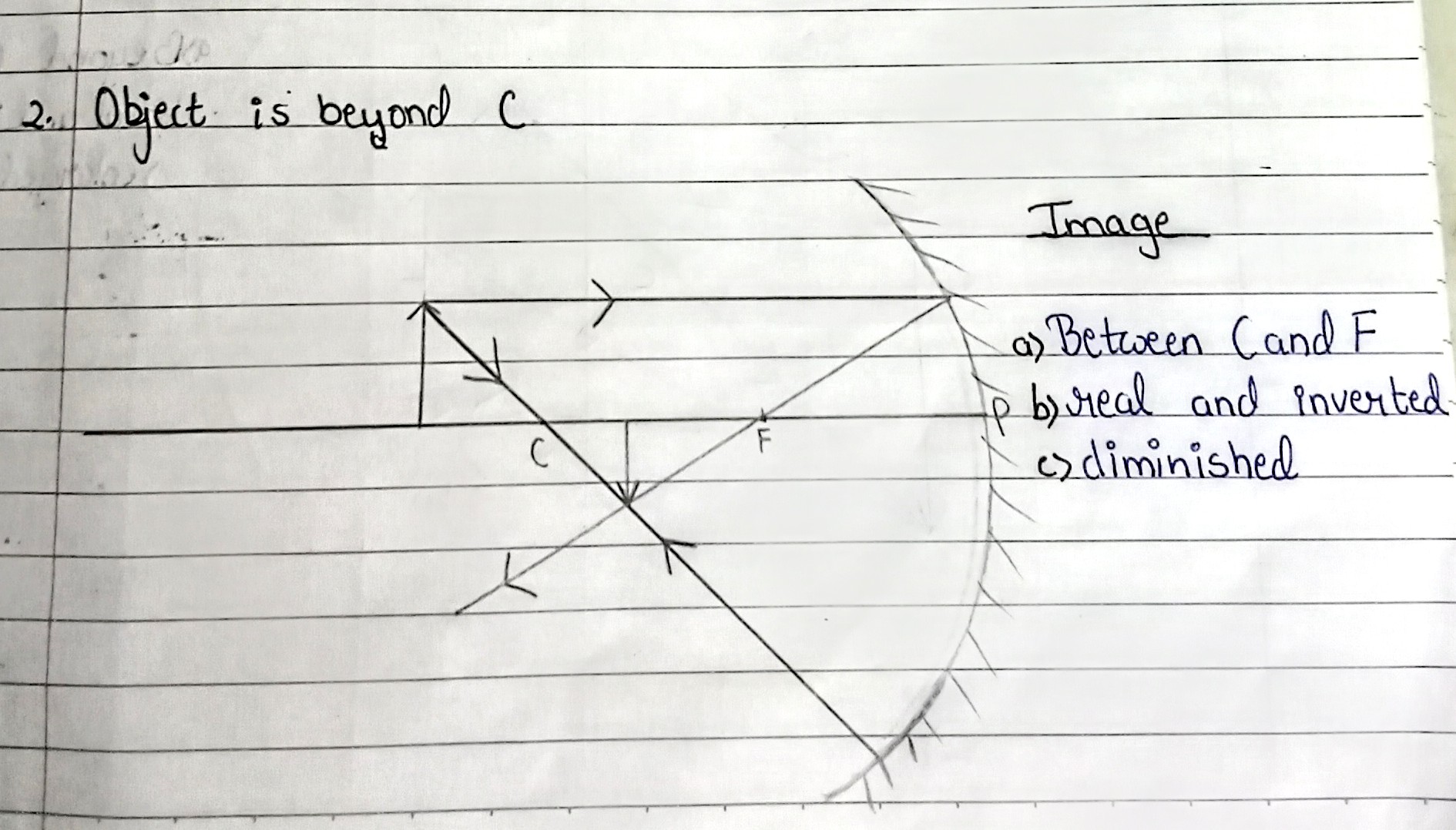
Object is at C
Object is between C and F
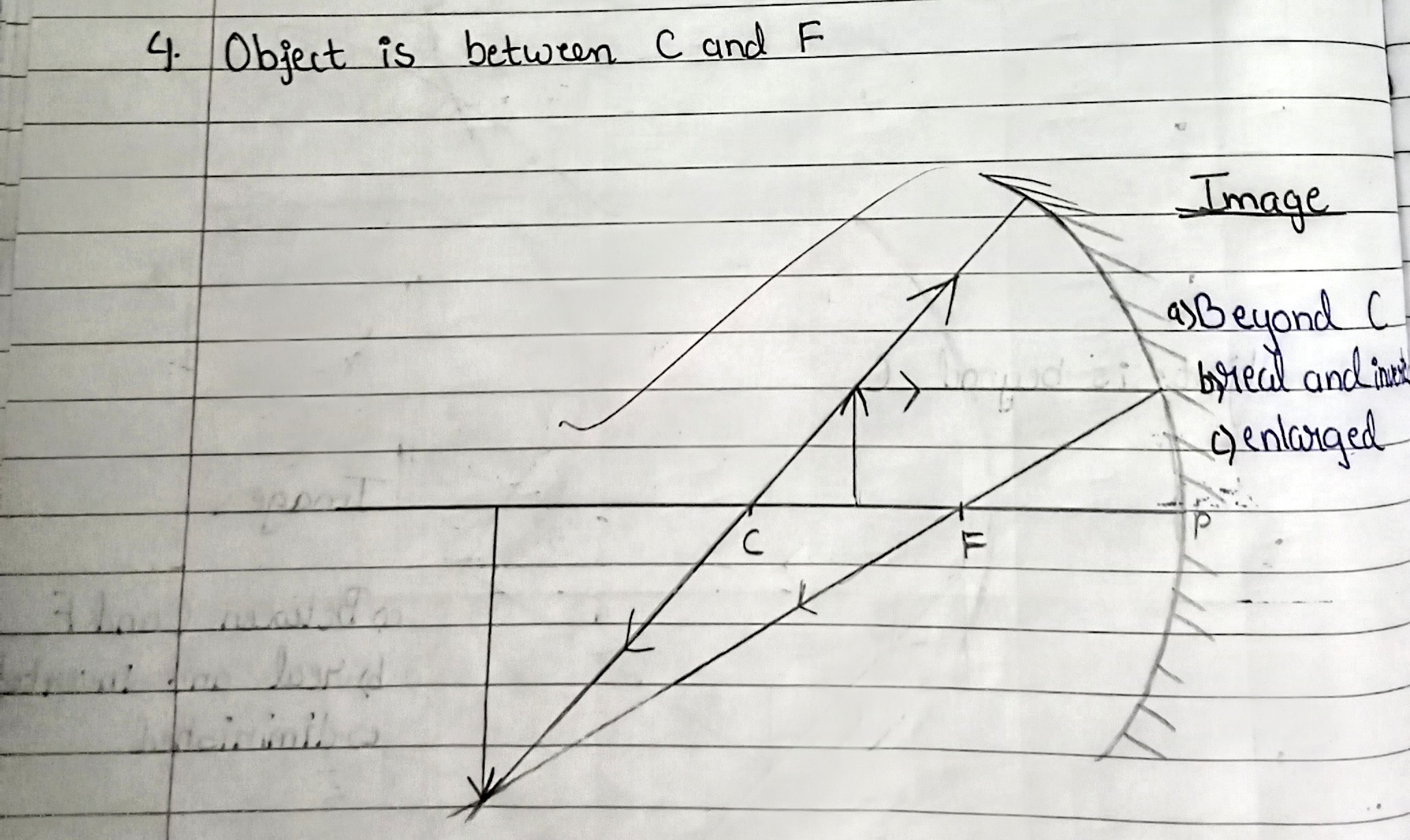
Object is at F
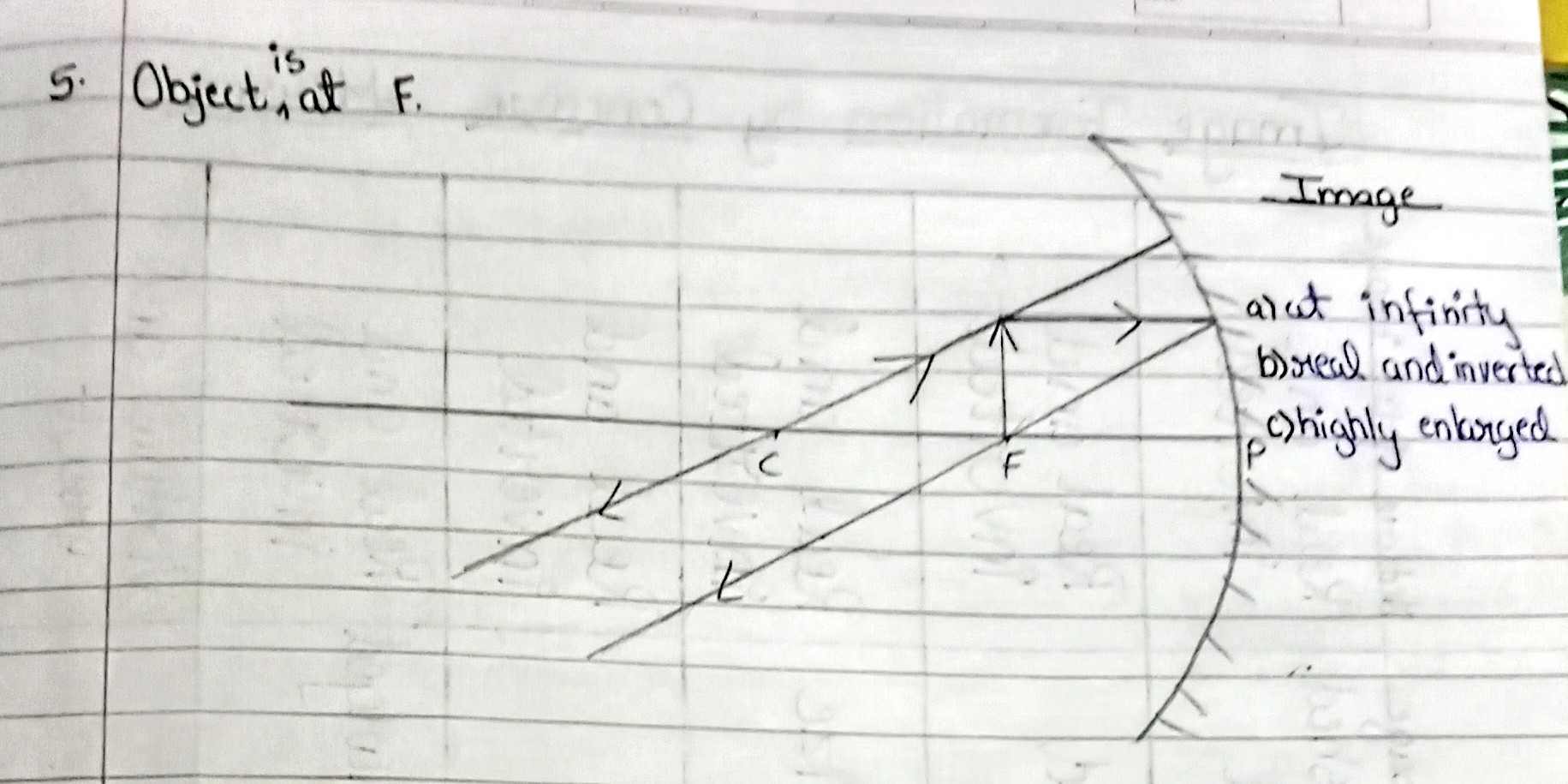
Object is between F and P
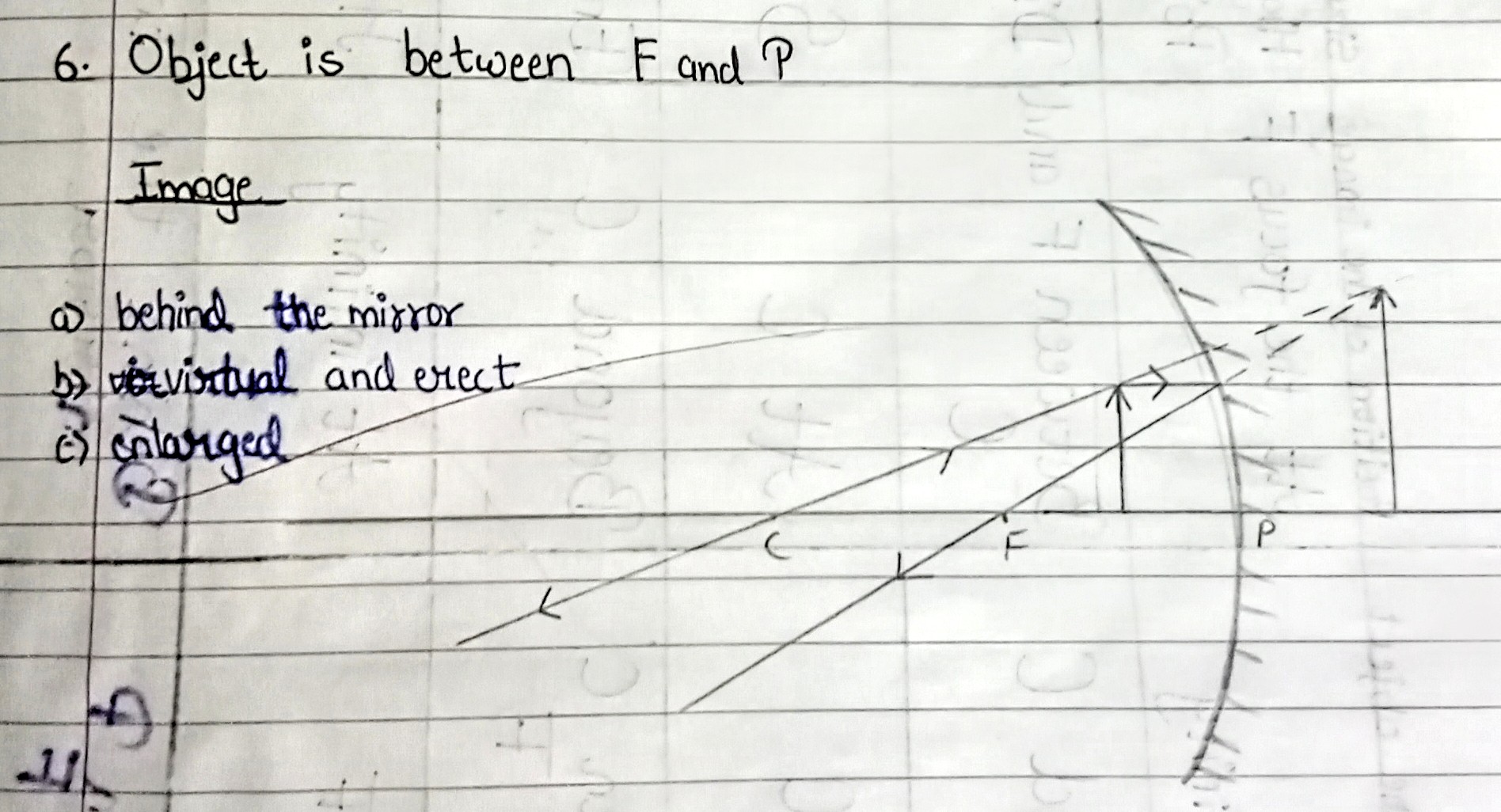
Image formation by a convex mirror
Object is at infinity
Object is between infinity and pole
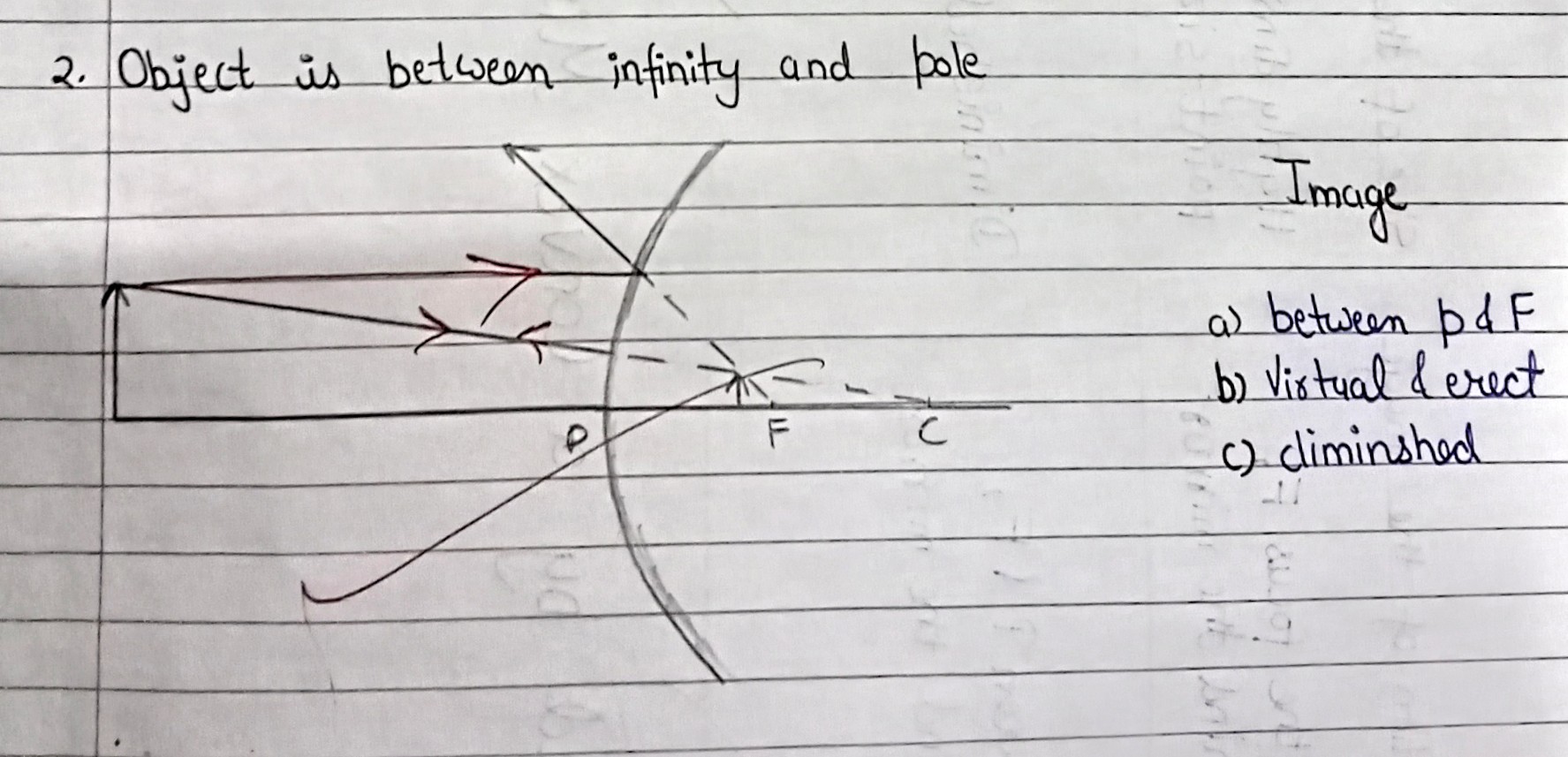
Uses of concave mirror
1. Used as a reflector torch, searchlights, and headlights of vehicles to get powerful parallel beams of light.
2. Used as doctor's head mirrors to focus light on body parts like eyes, nose,, and ears to be examined.
3. Used as a shaving mirror and a makeup mirror it gives an erect and magnified image of the face.
4. Used as a dendentist'srror to observe large images of the teeth.
5. Used to concentrate light to produce heat in solar cookers and solar furnaces.
6. Used in reflecting type telescope.
Uses of convex mirror
1. Used as a reflector in street lamps as light from the lamp diverges over a large area.
2. Used in automobiles as rearview mirrors as it gives affect image and a wider field of view.
3. Used in shops and on dead turns of a road.
Sign convention for concave mirror
Object distance = u = -ve(always)
Image distance= v = +ve or -ve
Focal length= f = -ve (always )
Height of the image = hi = +ve (always)
Height of the object = ho = +ve or -ve
Sign convention for convex mirror
Object distance = u = -ve(always)
Image distance= v = +ve(always)
Focal length= f = +ve (always )
Height of the image = hi = +ve (always)
Height of the object = ho = +ve(always)
Mirror formula and magnification
Mirror formula: 1/f=1/v+1/u
Magnification: m=hi/ho or m=-v/u
If m=+ve, image=>virtual and erect
If m=-ve, image=>real and inverted
lml>1= enlarged image
lml<1= diminished image